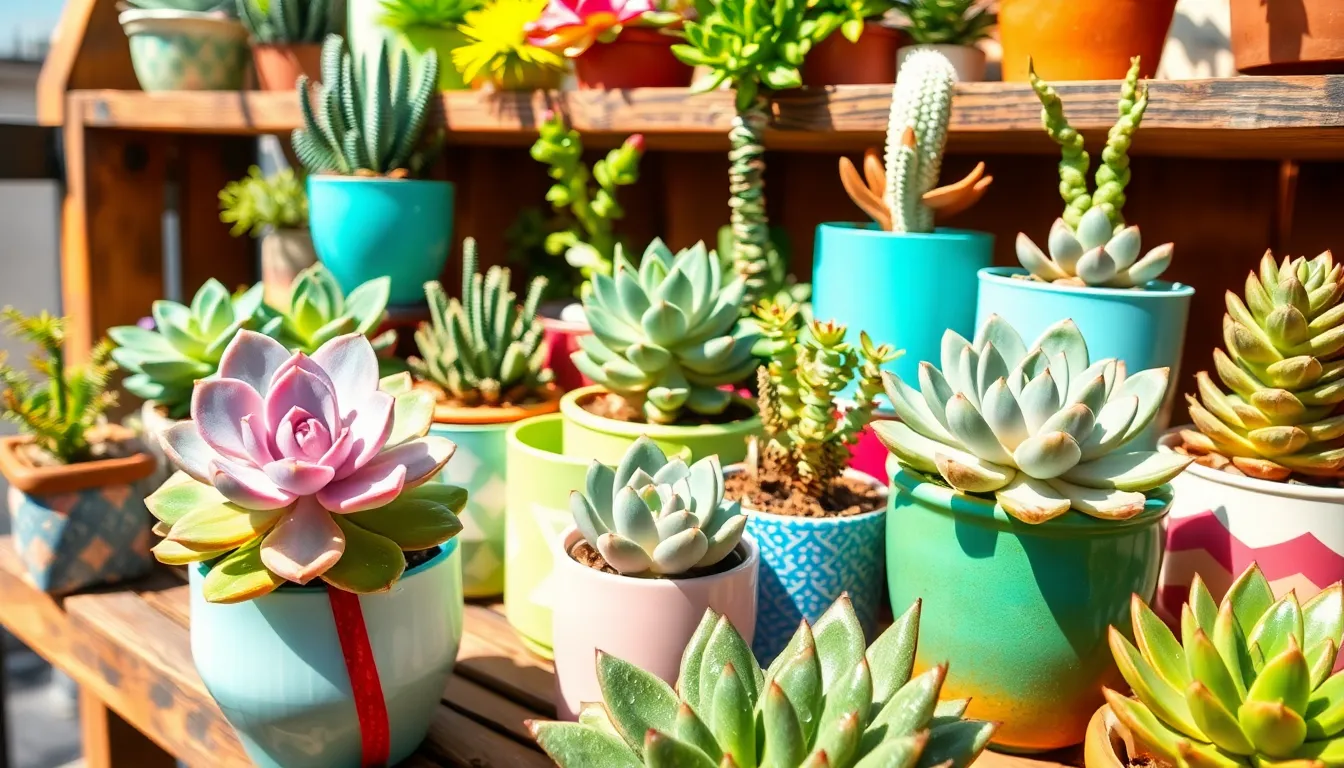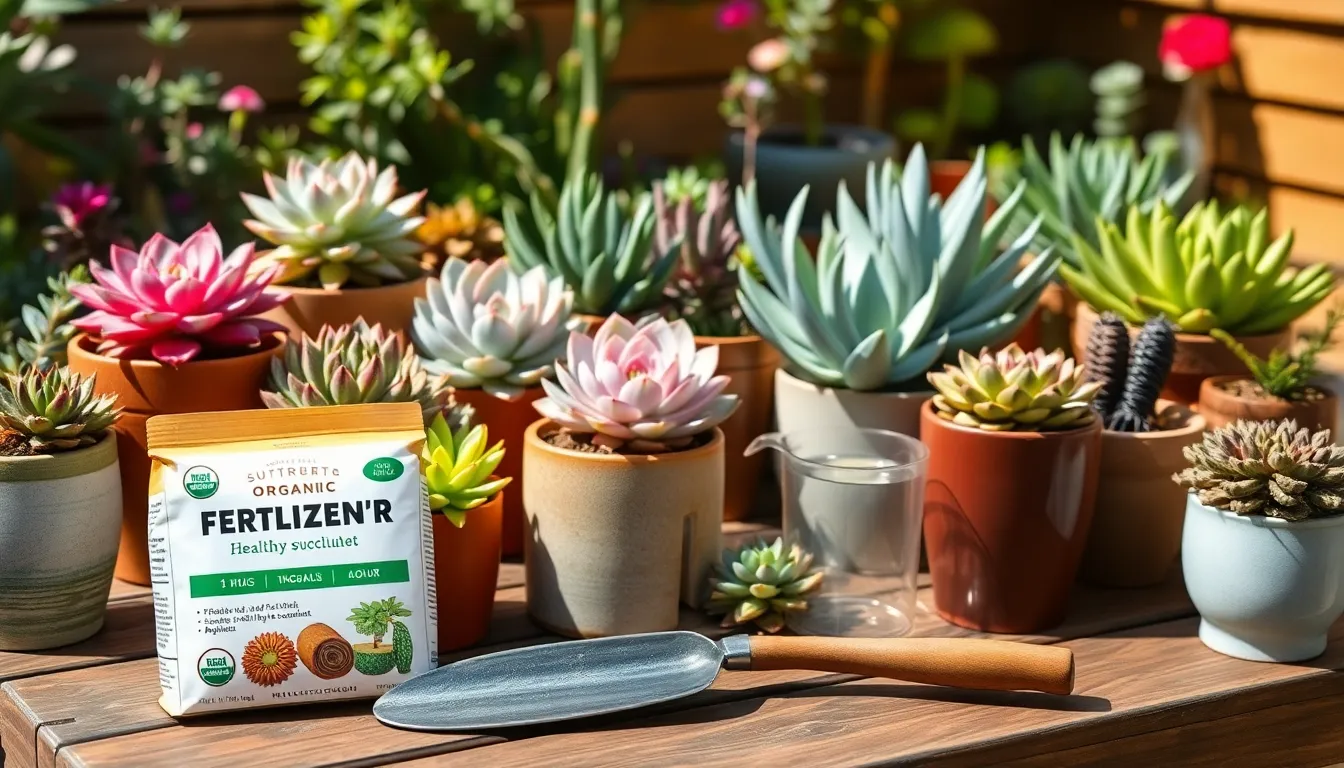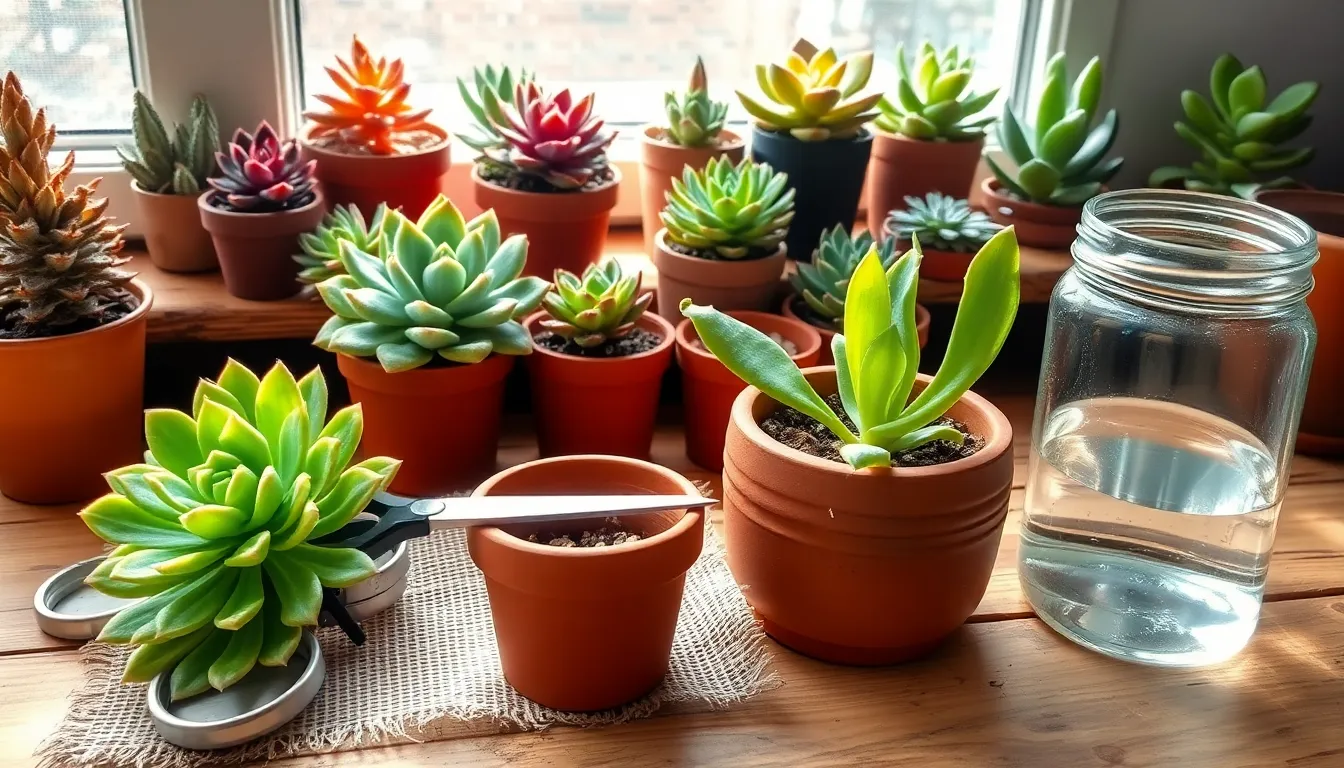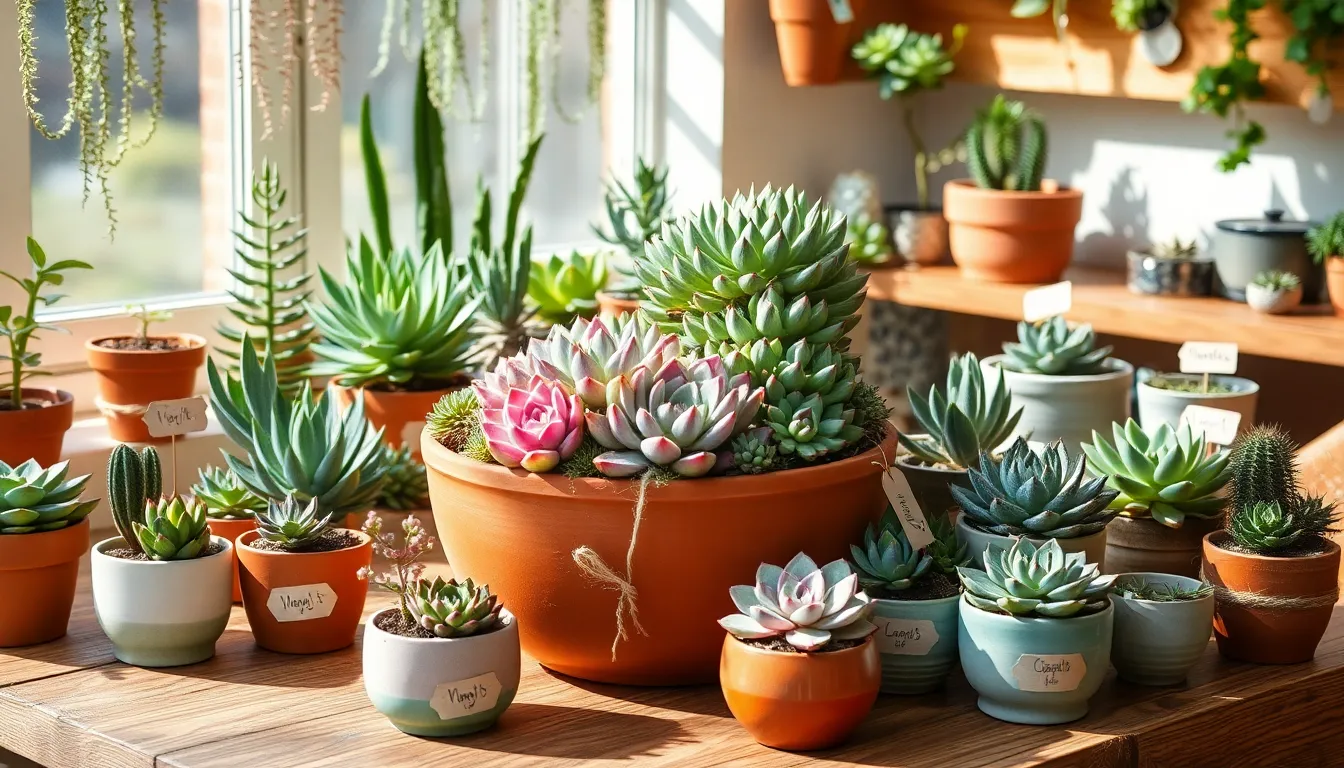In the bustling world of modern living, where space is often at a premium, finding the perfect plants to adorn your home can sometimes feel like a daunting task. Fear not, whether you’re a seasoned gardener or just starting to explore the joys of plant parenting, succulents offer a delightful solution that combines beauty with practicality. These charming, low-maintenance plants are not only versatile but also forgiving, making them ideal companions for both beginners and experienced green thumbs alike.
Succulents possess an intrinsic elegance and resilience, thriving in a variety of environments with minimal care. Their unique ability to store water means they can tolerate a bit of neglect, which is perfect for those with busy lifestyles or limited gardening experience. In this article, we’ll explore 13 stunning succulents that are perfectly suited for small spaces, bringing a touch of nature into even the coziest of homes.
Prepare to discover a palette of textures and colors that will transform your living space into a vibrant oasis. From the architectural elegance of the Zebra Haworthia to the playful charm of the Burro’s Tail, each succulent offers its own unique aesthetic and personality. By the end of this article, you’ll have a curated list of succulents that not only fit your space but also align with your personal style, empowering you to cultivate a thriving indoor garden that reflects the warmth and creativity of your home.
Choosing Compact Succulent Varieties
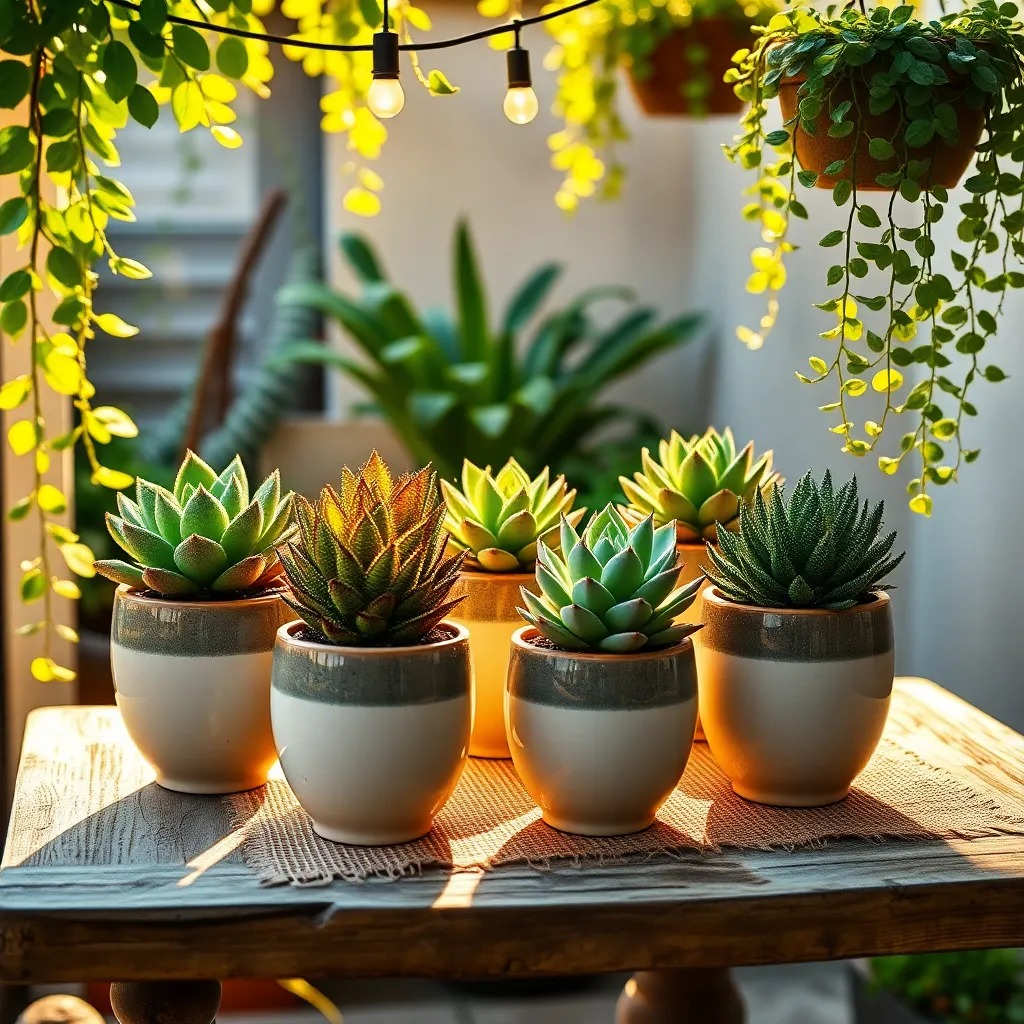
Compact succulent varieties are ideal for small spaces, as they offer both beauty and practicality without overwhelming the area. For beginners, start with species like Haworthia or Sempervivum, which are known for their resilience and easy care requirements.
Understanding the specific needs of compact succulents is crucial for their success. These plants generally thrive in well-draining soil; consider using a cactus mix or amending regular potting soil with sand or perlite for improved drainage.
Watering is a critical aspect of succulent care, and compact varieties are no exception. Allow the soil to dry out completely between waterings to prevent root rot, a common issue with overwatered succulents.
Advanced gardeners can experiment with propagation techniques to expand their collection without needing more space. Leaf cuttings and offsets are popular methods, and they require minimal effort yet yield rewarding results.
Understanding Succulent Care Basics

Handling succulents with care starts with understanding their unique needs. Unlike most houseplants, succulents thrive on neglect rather than overattention, requiring less water and maintenance.
Optimal soil is crucial for succulent success, as they require a well-draining mix to prevent root rot. Consider using a cactus or succulent-specific soil, or create your own by mixing two parts potting soil, one part coarse sand, and one part perlite.
Light is another critical factor for succulent health, with most varieties needing bright, indirect sunlight. Position your succulents near a south- or east-facing window for the best results, keeping an eye out for signs of sunburn or stretching.
Watering succulents can be tricky, but a good rule of thumb is to allow the soil to completely dry out between waterings. During the warmer growing months, this might mean watering every one to two weeks, while in winter, monthly watering may suffice.
Ideal Lighting for Small Spaces
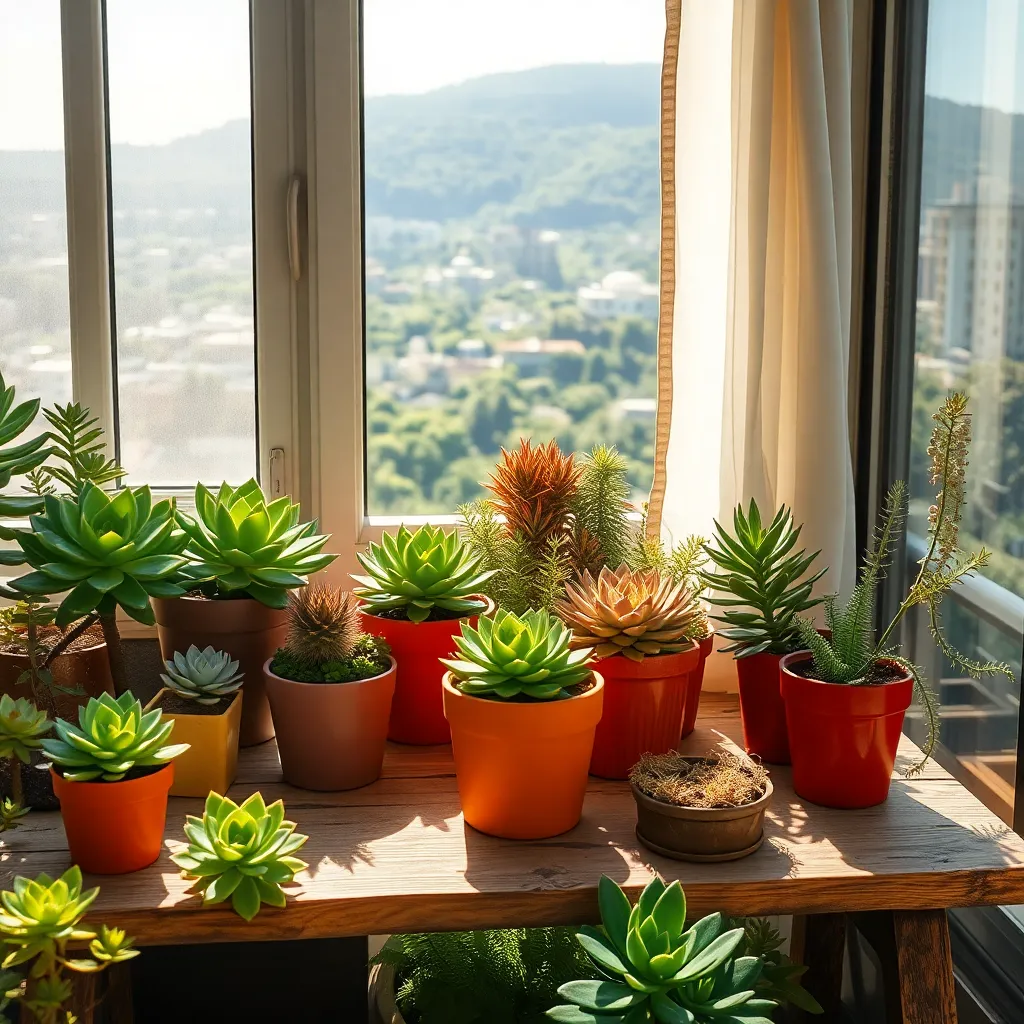
The right lighting is crucial for growing succulents in small spaces. Many succulents thrive in bright, indirect light, which can be achieved by placing them near east or south-facing windows.
For spaces with limited natural light, consider using grow lights to supplement lighting needs. LED grow lights are energy-efficient and can be adjusted to provide the ideal spectrum for succulent growth.
Position your succulents about 6-12 inches from the light source to ensure they receive adequate illumination. Regularly rotate your plants to ensure even light distribution, preventing them from leaning towards the light.
Monitor your succulents for signs of insufficient light, such as elongated stems or pale leaves. Conversely, if leaves appear scorched or bleached, they may be receiving too much direct sunlight and need to be repositioned.
Perfect Pots for Succulent Growth

When choosing the perfect pot for your succulents, ensure it has adequate drainage to prevent root rot. Look for pots with multiple drainage holes, as succulents are particularly sensitive to overwatering.
Materials matter when selecting pots for succulents. Terracotta and ceramic pots are excellent choices because they are porous, allowing the soil to dry out efficiently between waterings.
Consider the size of the pot in relation to your succulent. A pot that’s too large can retain excess moisture, while a snug fit helps maintain proper moisture levels and supports compact root growth.
Advanced gardeners might explore using self-watering pots with caution, ensuring they adjust the watering frequency accordingly. These pots can be beneficial in dry climates but require a keen eye for water levels.
Creating a Succulent Display
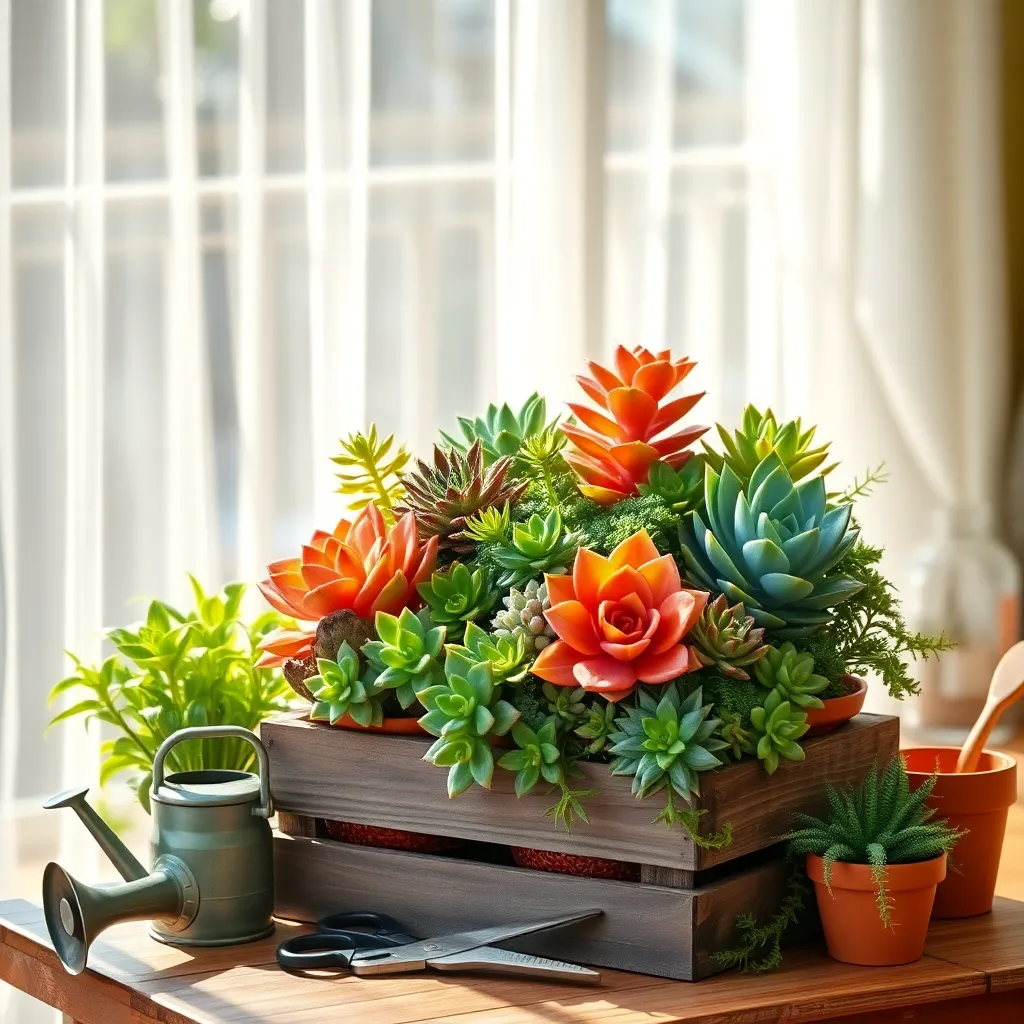
Creating a succulent display is a delightful way to bring a touch of nature indoors or to enhance your outdoor space. Begin by selecting a variety of succulents that offer contrasting shapes, colors, and textures to create visual interest.
Choose a shallow container with drainage holes, as succulents thrive in well-drained environments. Fill the container with a specially formulated cactus and succulent soil mix to ensure proper aeration and prevent root rot.
Arrange the succulents in groups based on their size and growth habits, placing taller plants in the center or at the back of your display. This layering technique will create depth and allow each plant to receive adequate sunlight.
Water your succulent display sparingly, allowing the soil to dry out completely between waterings. During the growing season, typically spring and summer, you may need to water more frequently, about once every two weeks.
For a more advanced touch, consider adding decorative elements like stones or driftwood to complement your succulents. These additions not only enhance the aesthetic appeal but also help maintain soil stability and moisture levels.
Soil Mix for Healthy Succulents
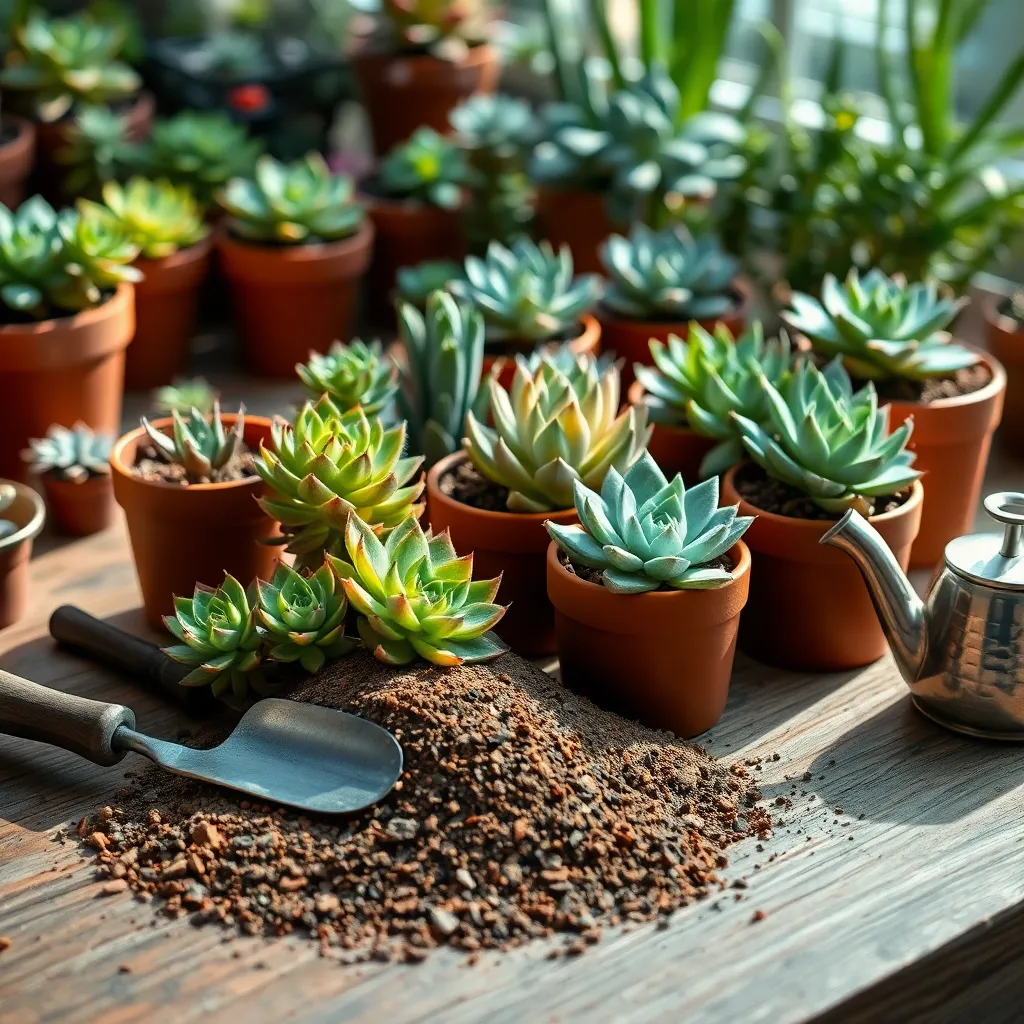
To ensure your succulents thrive, creating the right soil mix is essential. Succulents prefer a well-draining soil to prevent root rot and promote healthy growth.
Begin with a base of potting soil and enhance it with materials that improve drainage. Adding coarse sand or perlite to your soil mix will allow excess water to escape easily.
Incorporate organic matter, like coconut coir or pine bark, to provide nutrients while maintaining aeration. These materials help retain some moisture without becoming waterlogged, which is crucial for succulent health.
For those interested in a more tailored approach, consider testing different ratios for your soil mix. A typical recommendation is two parts potting soil, one part coarse sand, and one part perlite, but feel free to adjust based on your specific plant needs and environmental conditions.
Watering Tips for Small Containers
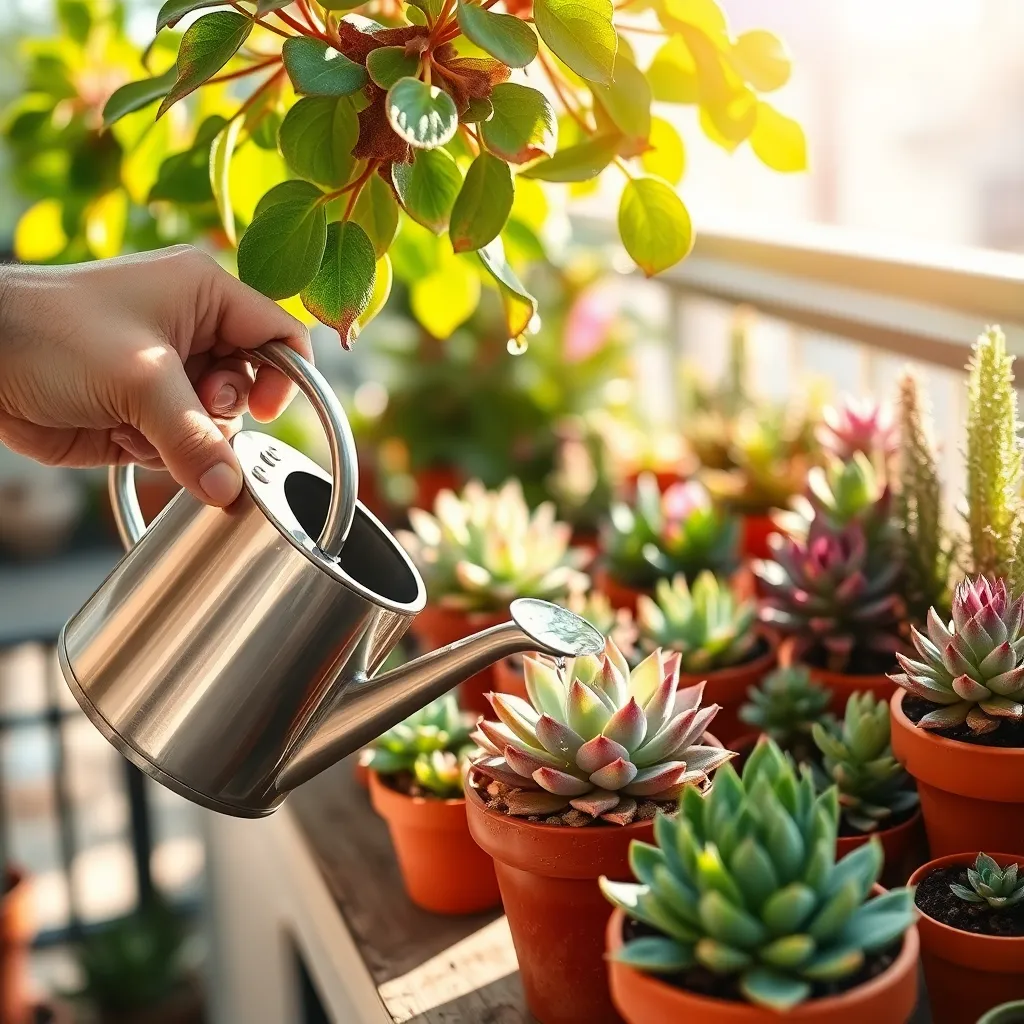
Watering small containers requires precision as they can dry out faster than larger pots. It’s crucial to check the soil moisture frequently by inserting your finger about an inch deep into the soil; if it feels dry, it’s time to water.
To water succulents in small containers effectively, use a watering can with a narrow spout for targeted watering. This method helps avoid overwatering and ensures that you only saturate the soil rather than the leaves, which can lead to rot.
Consistency is key when it comes to watering succulents in small containers. Plan to water about once every 7 to 10 days, but adjust based on your plant’s environment—more frequently in hot, dry conditions, and less often in cooler, humid climates.
For advanced care, consider using a moisture meter to provide a more accurate reading of when your succulents need water. This tool can be particularly helpful for beginners who are still developing a feel for their plants’ needs.
Fertilizing Succulents in Limited Space
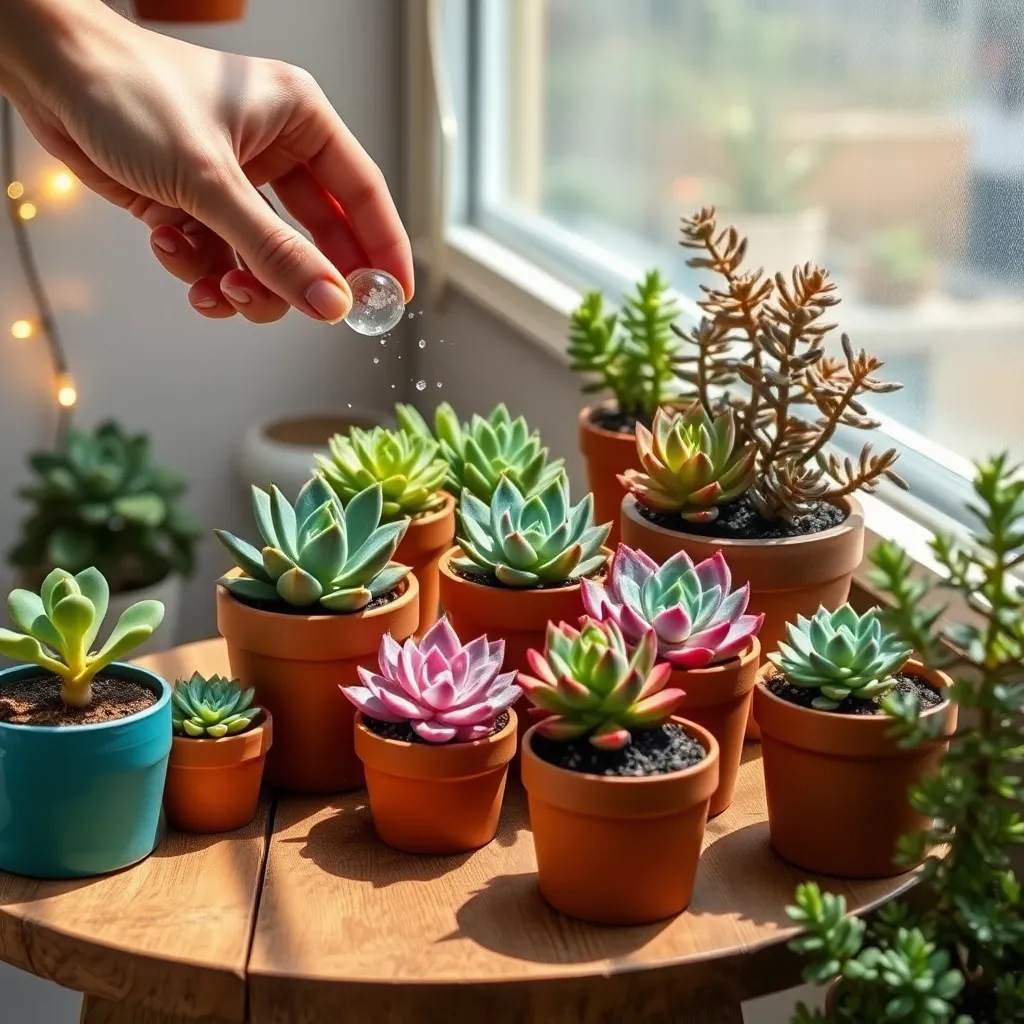
Succulents are unique in their minimal fertilization needs, especially when grown in limited spaces. For beginners, it is crucial to understand that over-fertilizing can harm these resilient plants by causing them to grow too quickly, weakening their structure.
A balanced, water-soluble fertilizer applied at one-quarter strength is ideal during the growing season, typically spring and summer. This approach ensures that your succulents receive the nutrients they need without overwhelming their root systems.
For those with more experience, consider using a specialized cactus or succulent fertilizer, which is often lower in nitrogen to prevent excessive growth. Apply this fertilizer every two to three months during the active growing period for optimal results.
To maximize nutrient uptake, always water your succulents thoroughly before applying fertilizer. This practice helps prevent root burn and ensures that the fertilizer is evenly distributed throughout the soil.
Pruning to Maintain Size
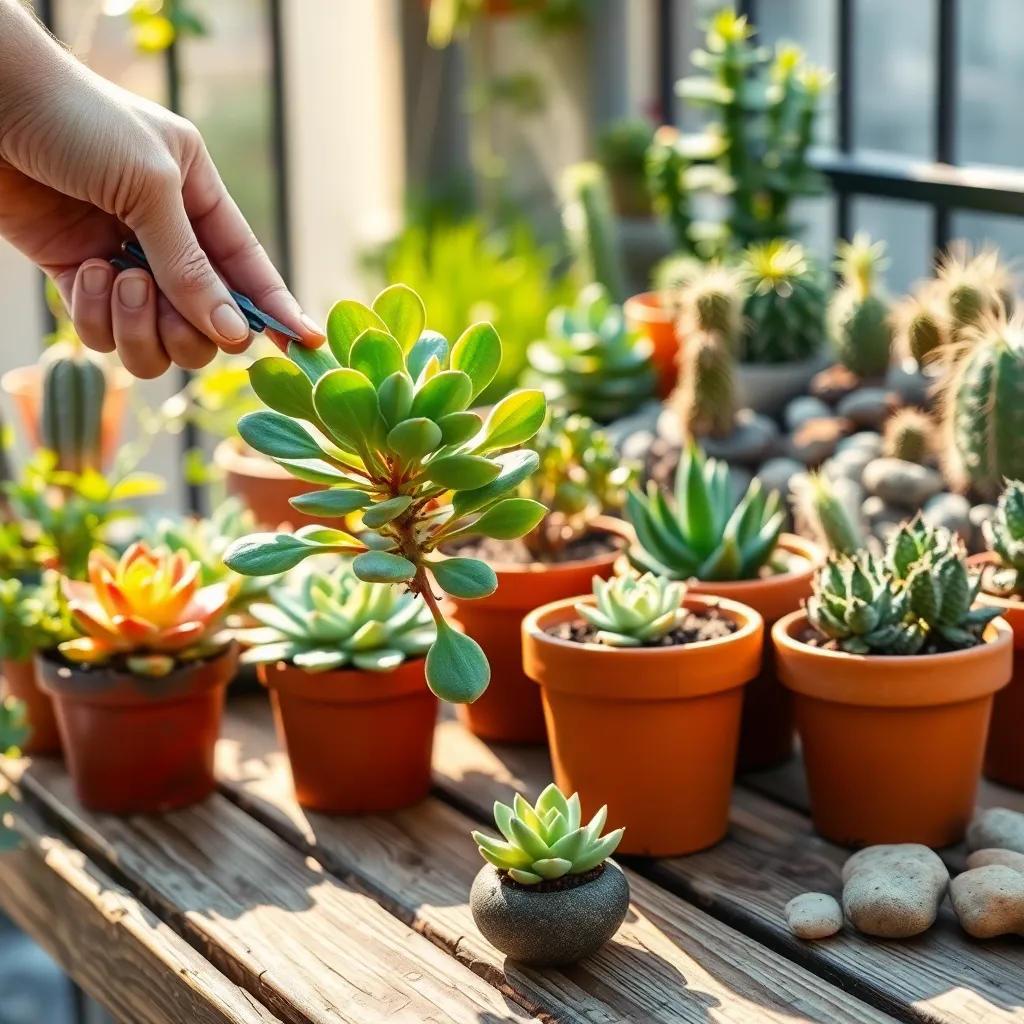
Pruning is essential not only for aesthetic reasons but also to maintain the size of your succulents, especially in small spaces. Start by identifying any dead or damaged leaves, as removing these can encourage healthier growth and prevent disease.
For beginners, a simple pair of sharp scissors or pruning shears will suffice. Ensure your tools are clean to avoid transferring any potential diseases to your succulents.
More experienced gardeners might consider using specialized pruning shears for precision, especially in densely packed arrangements. Cutting just above a leaf node can stimulate new growth, keeping your succulents compact yet lush.
Remember that some succulents, like the jade plant, benefit from more frequent pruning to maintain their size and shape. It’s best to prune during the plant’s active growing season, typically spring or early summer, to minimize stress on the plant.
Preventing Pests and Diseases
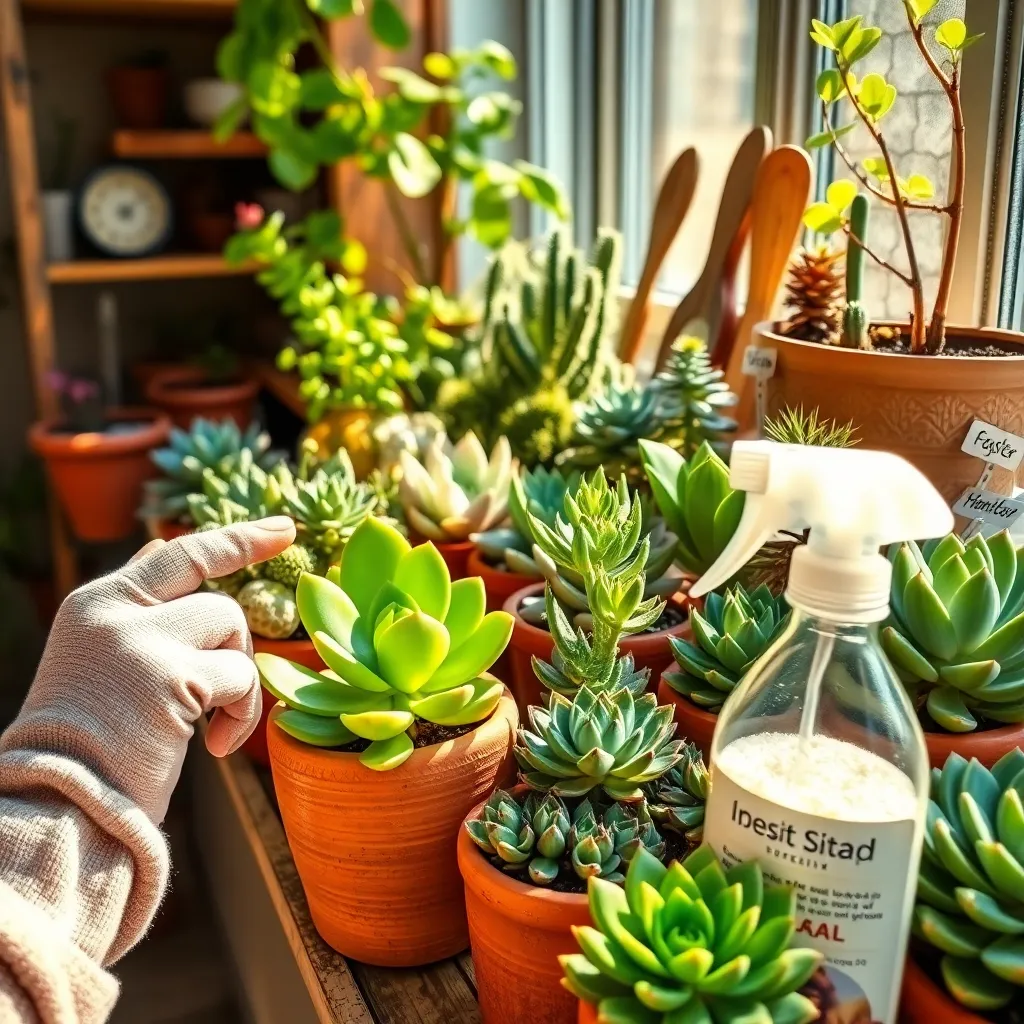
Preventing pests and diseases is essential for maintaining the beauty of your succulents. Regularly inspecting your plants gives you the chance to spot potential issues early, allowing for quick intervention.
Start by ensuring your succulents have well-draining soil, which helps prevent root rot—a common issue in overwatered plants. A mixture of cactus soil and perlite or coarse sand works well to improve soil aeration.
Water your succulents sparingly, allowing the soil to dry out completely between waterings. This practice not only keeps the roots healthy but also makes the environment less favorable for pests such as fungus gnats.
If you notice any signs of pests like aphids or mealybugs, use a cotton swab dipped in rubbing alcohol to gently remove them. For more widespread infestations, consider using neem oil as a natural pesticide, applying it according to the package instructions.
Encourage good air circulation around your succulents by spacing them appropriately and avoiding overcrowding. This reduces the chance of fungal diseases developing, especially in humid conditions.
Finally, maintain a regular cleaning routine by wiping down leaves with a damp cloth to remove dust and debris. This not only keeps the plants looking their best but also allows for closer inspection, catching any signs of trouble early.
Succulents for Low-Light Areas
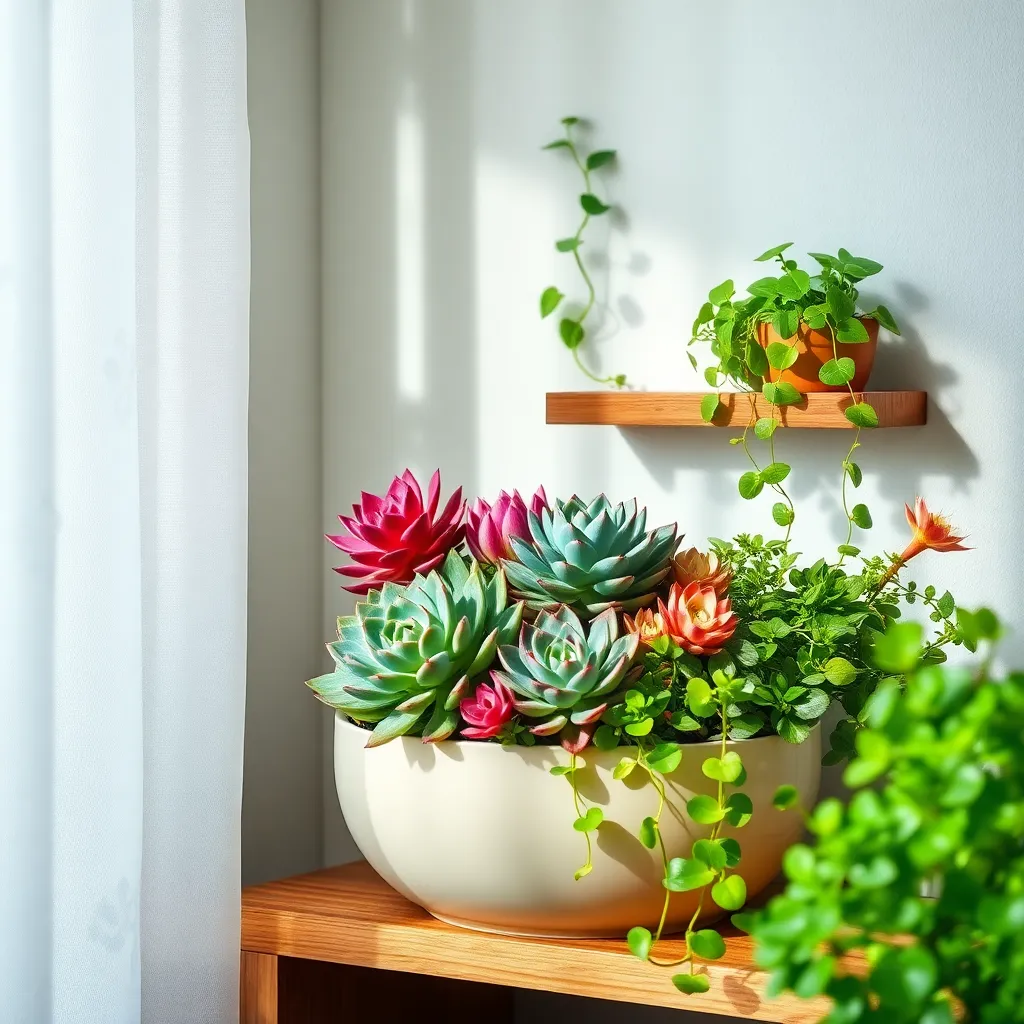
Succulents are typically known for thriving in bright sunlight, but some varieties adapt well to low-light conditions, making them ideal for small, shaded spaces. Sansevieria, commonly known as snake plant, is one such succulent that tolerates low light while still maintaining its structural beauty.
For beginners, it’s crucial to understand that low-light succulents still require some indirect light to thrive. Placing your Sansevieria near a north-facing window or using sheer curtains to diffuse bright light can provide the perfect conditions.
Advanced gardeners might explore using grow lights to supplement natural light during shorter days, ensuring the plant receives the required intensity. LED grow lights are energy-efficient and can mimic the sun’s spectrum, promoting healthy growth even in the darkest corners of your home.
When it comes to soil, opt for a well-draining mix, such as a cactus or succulent blend, to prevent root rot. Watering should be infrequent but thorough, allowing the soil to dry out completely between waterings; a schedule of every two to three weeks typically works well for low-light succulents.
Winter Care for Indoor Succulents
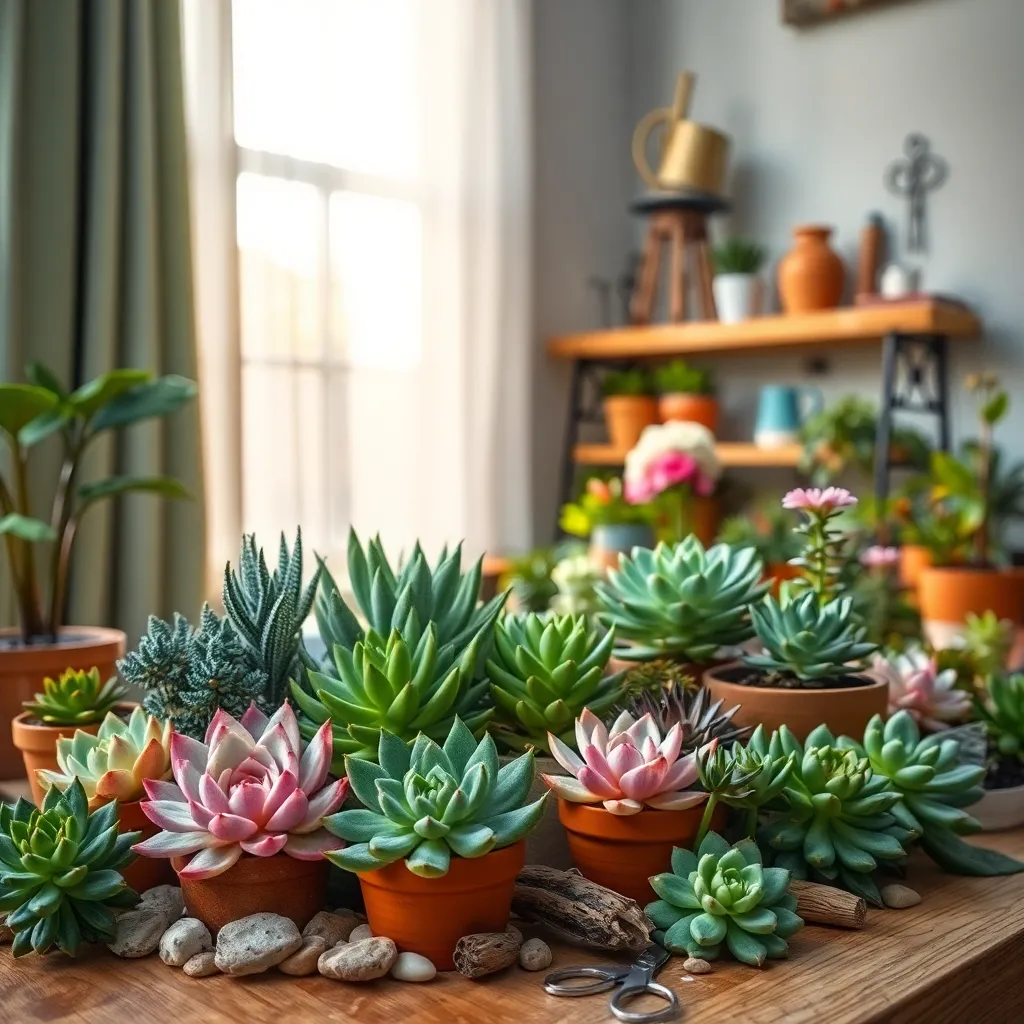
During winter, indoor succulents require a shift in care to thrive despite lower light levels and cooler temperatures. Reducing watering frequency is essential since succulents need less water when they are not actively growing.
Ensure that your succulents receive adequate light, even in winter. If natural light is insufficient, consider using full-spectrum grow lights to supplement their light requirements.
It’s crucial to maintain a temperature range between 60°F and 75°F for optimal succulent health. Sudden temperature drops can stress the plants, so keep them away from drafty windows or heating vents.
For those with more experience, consider using a cactus and succulent soil mix to improve drainage, as soggy soil can lead to root rot. Adding extra perlite or pumice to the mix can enhance aeration and ensure your succulents’ roots stay healthy and dry.
Arranging Succulents in Tiny Terrariums
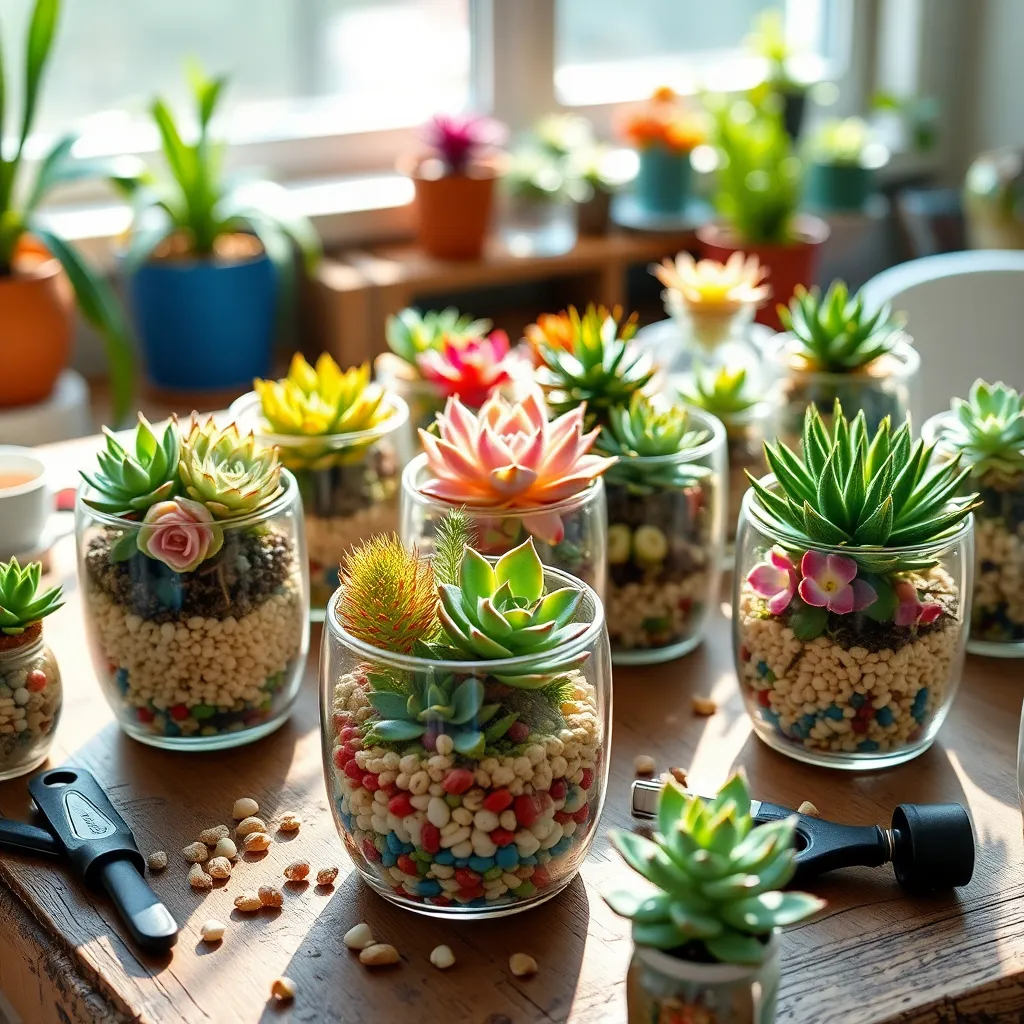
Creating a tiny terrarium with succulents is a delightful project that brings a touch of greenery to any space. Start by choosing a clear container with or without a lid, ensuring it’s clean and dry before planting.
Next, layer the bottom of the container with small pebbles or gravel to provide drainage, which is crucial since terrariums lack drainage holes. On top of this, add a layer of activated charcoal to keep the environment fresh and prevent mold growth.
Use a well-draining soil mix, such as one specifically designed for cacti and succulents, to fill the container about halfway. This provides the necessary aeration and prevents root rot, a common issue with succulents in containers.
Select a variety of succulents that vary in height, color, and texture for visual interest. Place your tallest succulent in the center or at the back, then arrange smaller ones around it, ensuring each plant has enough space to thrive.
After planting, lightly water the soil until it’s just damp, and avoid watering again until the soil is completely dry. Succulents are drought-tolerant and prefer less frequent watering, especially in a terrarium setting.
Position your terrarium in a bright spot that receives indirect sunlight, as too much direct light can scorch the plants. Rotate the terrarium occasionally to ensure even light exposure, promoting balanced growth.
For a finishing touch, add decorative elements like small stones or figurines to personalize your terrarium. These additions can enhance the aesthetic appeal and make your terrarium a unique focal point in your home.
Conclusion: Growing Success with These Plants
In exploring the ’13 Beautiful Succulents for Small Spaces,’ we’ve drawn meaningful parallels between nurturing succulents and fostering healthy relationships. Key concepts include the importance of patience, understanding unique needs, creating a supportive environment, and allowing space to grow. Just like succulents thrive with the right balance of care and independence, so do our connections with others.
As a next step, why not select a succulent that resonates with your relationship goals and place it in your home as a daily reminder of these principles? This small action can serve as a powerful symbol of your commitment to nurturing your bonds.
Be sure to save or bookmark this article as a handy resource. Its insights can guide you in cultivating thriving, resilient relationships, much like the enduring nature of succulents.
Looking forward, remember that with consistent care and intention, your relationships can blossom beautifully, offering joy and fulfillment. Embrace these concepts with the confidence that your efforts will plant the seeds for lasting success and happiness in your relationships.

